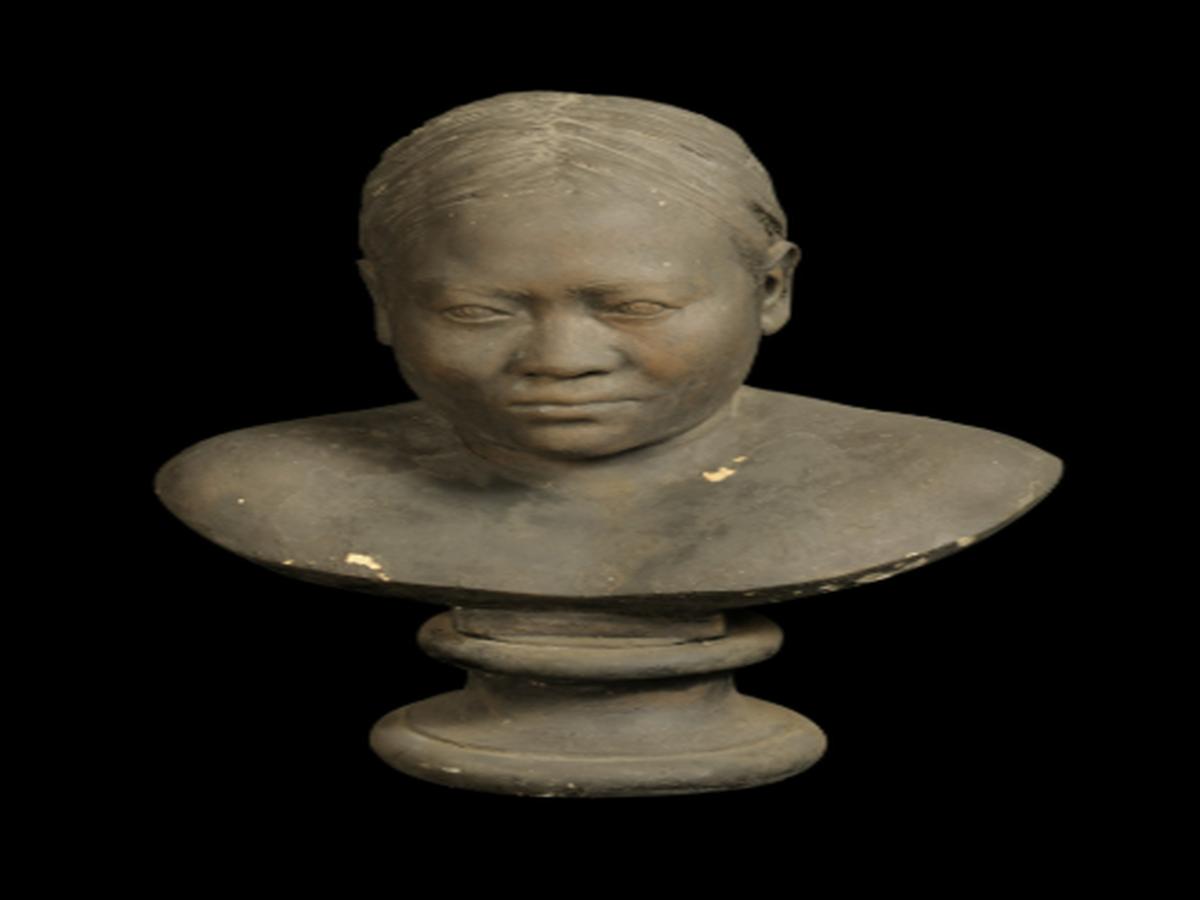State
Tribe Name
Art Type
short description
Sculpted in plaster, it represents a Limbu girl from the hills of Darjeeling, and it can be inferred that these Mongoloid facial features are characteristic of the Limboo. The rounded face with middle-parted hair, epicanthic fold of the eyes, flat nose, and moderately thick lips-all symbolize her features. The statue stands elegantly on a circular pedestal, enhancing its grandness and dignity aesthetically. The Limbus or Yakthungs are the indigenous ethnic group of people of the eastern Himalayan belt from Sikkim, Darjeeling, and eastern Nepal. They are regarded as the first settlers in these areas with their distinct traditions, oral literature, and ethnic dressing. The people are said to be speaking Limbu language and it's classified under the Sino-Tibetan family of languages. Their belief system is a blend of animism, Buddhism, and Kiratism.
Thumbnail

Filter Postion
Left
Filter Background
Off
Theme
Filter Header Image

content
Image

description
Sculpted in plaster, it represents a Limbu girl from the hills of Darjeeling, and it can be inferred that these Mongoloid facial features are characteristic of the Limboo. The rounded face with middle-parted hair, epicanthic fold of the eyes, flat nose, and moderately thick lips-all symbolize her features. The statue stands elegantly on a circular pedestal, enhancing its grandness and dignity aesthetically. The Limbus or Yakthungs are the indigenous ethnic group of people of the eastern Himalayan belt from Sikkim, Darjeeling, and eastern Nepal. They are regarded as the first settlers in these areas with their distinct traditions, oral literature, and ethnic dressing. The people are said to be speaking Limbu language and it's classified under the Sino-Tibetan family of languages. Their belief system is a blend of animism, Buddhism, and Kiratism.
This interpretation of the art relates to an ethnic history; however, it is equally part of a general culture pride, while at the same time preserving its own identity. This meticulous treatment of details, such as the epicanthic folds and parted hair, gives the work ethnographic accuracy, thus rendering it important as an educational and artistic artifact. Furthermore, these busts would serve as a bridge to a museum show and promote cross-cultural cooperation and appreciation of tribal diversity in India, especially those from the Himalayan foothills.
This interpretation of the art relates to an ethnic history; however, it is equally part of a general culture pride, while at the same time preserving its own identity. This meticulous treatment of details, such as the epicanthic folds and parted hair, gives the work ethnographic accuracy, thus rendering it important as an educational and artistic artifact. Furthermore, these busts would serve as a bridge to a museum show and promote cross-cultural cooperation and appreciation of tribal diversity in India, especially those from the Himalayan foothills.
Image Mode
landscape
promoted
On
Verified
Off
